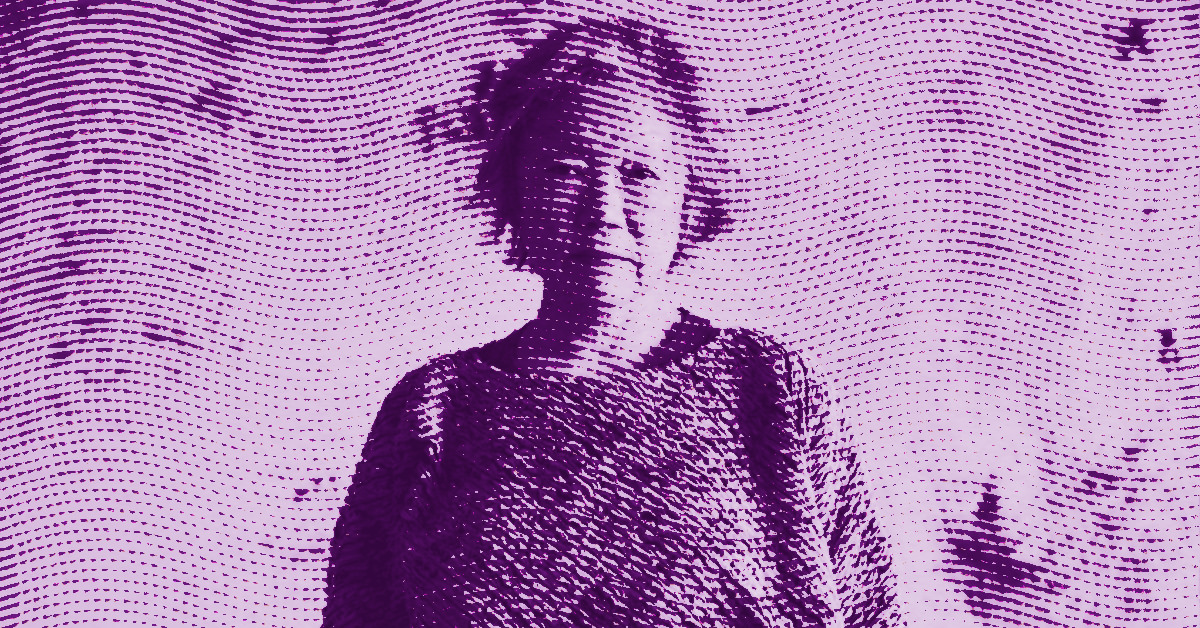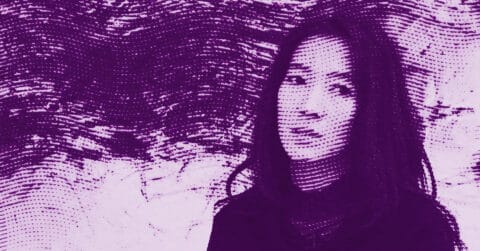Listen to me carefully, you bunch of snobs. Art is not a race. Art is not a sprint. Art is certainly not that frenzied charade where gallery owners sell you the latest trending phenomenon before the paint has even dried. Art, my dear friends, can be a thirty-year journey spent on a single canvas, as Kang Myonghi did with her masterwork “Le temps des camélias”.
Yes, you heard correctly. Thirty long years. Forgive me, but this figure deserves to be emphasized. In a world where your attention is measured in milliseconds by marketing professionals, where your favorite artists produce like machines to satisfy your insatiable appetite for novelty, Kang Myonghi spent three decades on a single work. And you know what? This extraordinary woman, born in 1947 in Daegu, South Korea, simply stated: “I obey time” [1]. Not “I manipulate time”, not “I master time”, but “I obey time”. What humility in the face of this resource we all waste as if it were infinite!
This relationship with time is reminiscent of the philosophy of Henri Bergson, for whom lived time, “duration,” is qualitatively different from time measured by our clocks. Bergson speaks to us of a time that unfolds organically, stretching and contracting according to our inner perception [2]. Kang Myonghi literally embodies this Bergsonian conception in her artistic practice. When she declares: “I let my hands be those of time” [3], she expresses this voluntary submission to that organic temporal flow described by Bergson, to that duration that escapes any external measure.
Kang’s painting is the very antithesis of our age obsessed with immediacy. She defies our irrepressible need for instant results. Her canvas “Le temps des camélias,” started in the 1980s in Paris’s 19th arrondissement, abandoned for a decade, then resumed on the Korean island of Jeju in 2007, was only completed in 2017. As Bergson explains in “Creative Evolution,” “the more we deepen the nature of time, the more we understand that duration means invention, creation of forms, continuous elaboration of the absolutely new” [4]. Every brushstroke of Kang Myonghi is inscribed in this creative duration, in this lived time that has nothing to do with the abstract time of physicists.
The French philosopher taught us to distinguish spatial, quantitative time, divisible into measurable units, from the time of consciousness, qualitative and indivisible. Kang Myonghi seems to navigate exclusively in the latter. “I really can’t explain,” she says about her creative process, “I just felt that this painting had to be done like this. I trusted the moment, to know the right moment for me to paint the different parts until I finished” [5]. This way of creating perfectly reflects what Bergson calls intuition, this method that consists of “thinking in duration” rather than in terms of analyzable space.
There is something incredibly radical in this approach, especially today. While the world of contemporary art is driven by fairs, biennials, auctions, and fleeting trends, Kang Myonghi works in a different temporal register. She is not concerned by your commercial cycles or passing fashions. She operates in a temporality of her own, a temporality where a work can mature over three decades.
But do not be mistaken: Kang Myonghi is not a recluse. She exhibited at the Centre Georges Pompidou in Paris as early as 1986, at the National Museum of Modern and Contemporary Art in Seoul in 1989, and at the Beijing Art Museum in 2011. Her works are known and respected by a circle of insiders, as emphasized by former French Prime Minister Dominique de Villepin, who describes her as “a jewel known only to insiders” [6]. And what still keeps an artist like Kang Myonghi in our collective consciousness, you may ask me? The answer is simple: gallerists like the de Villepin family, those rare species on the verge of extinction in our mercantile artistic ecosystem.
The father-son duo, Dominique and Arthur, defend Kang Myonghi’s work in their Hong Kong gallery with a fervor that takes me back to the heroic era when Dina Vierny supported her Russian artists against all odds, or when the Jaeger family of the Jeanne Bucher gallery devoted all their means and reputation to Nicolas de Staël or Maria Helena Vieira da Silva. This almost monastic devotion to an artist, not to a trend, not to a market, but to a singular vision, is a species disappearing in our contemporary artistic jungle. Seeing Dominique successfully pass this sacred flame to his son Arthur, who perpetuates this artistic priesthood in Hong Kong with astonishing integrity, is something exhilarating. While we live in an art world where everything seems for sale, including convictions, these guardians of the temple remind us why the profession of gallerist is serious, and above all precious. Yes, despite everything, for artists, the future still has a chance.
Now, let’s come to the work itself. If Kang Myonghi’s relationship to time evokes Bergson, her aesthetic approach resonates with the visual poetry of Cy Twombly. This connection is not accidental: like Twombly, Kang Myonghi is also a poet, and her two mediums allow her to “capture the world around her, reconstructing its cartography through metaphysical forms of representation” [7].
Kang Myonghi’s paintings, with their bursts of vibrant colors and atmospheric compositions, recall the way Twombly incorporated textual and pictorial elements to create works that oscillate between writing and painting. Art critic and poet Roland Barthes wrote about Twombly that his work was like “a writing that rose up, that detached itself from its instrumental base” [8]. Similarly, Kang Myonghi’s paintings seem to be poems that have risen from the page to become emotional landscapes, cartographies of the soul.
Kang Myonghi’s artistic practice shows striking parallels with Twombly’s approach. The poet and critic Alain Jouffroy, who knew and supported Kang Myonghi, could just as well have been talking about Twombly when he mentioned this “search for truth, light, and harmony” that characterizes the Korean artist’s work [9]. Both artists transform their experience of the world into visual traces that defy strict categorization. Is it abstract? Is it figurative? These questions lose their relevance in the face of works that impose themselves by their immediate presence, by their ability to evoke emotions and memories.
When Kang Myonghi categorically states “I have never painted abstractly” [10], she joins Twombly in this refusal of reductive labels. Both artists create works that, although apparently non-figurative at first glance, are deeply rooted in the real world, in a lived experience of the environment. As Dominique de Villepin explains about Myonghi: “What is very interesting in her way of looking at the world and nature, whether it is the Gobi Desert or simply the garden next door, is the importance given to time. She will look at the same landscape at different times of the day, then try to paint and capture the sum of all these different moments” [11].
This approach echoes the way Twombly was inspired by Mediterranean landscapes, classical mythology, and poetry to create works that are not literal representations but sensory and emotional evocations. Both artists show us that the most powerful art is not the one that imitates or illustrates, but the one that embodies, that brings the experience to life.
This poetic dimension is essential to understanding Kang Myonghi’s work. Poetry, like Myonghi’s painting, distills experience, extracts its essence. Her paintings never depict a specific scene, but rather “a blend of views, memories, and sensations” [12]. As she explains: “Every moment, from the time I wake up to the moment I start working, is part of the painting. And memories, maybe from 10 years ago, when looking at camellias, for example, will also be integrated” [13].
This holistic approach makes each canvas a microcosm, a universe in itself where time is condensed into colors and shapes. “There is not one figurative way to express what I paint,” she says. “It is the accumulation of observation, trying to capture the sky, for example, and really capture the ‘whole,’ rather than a specific camellia or a certain rock” [14].
It is easy to see why her works resonate so deeply with those who take the time to contemplate them. In a world saturated with instant and disposable images, Myonghi’s paintings offer a rare experience: that of condensed time, sustained attention, authentic presence. They invite us to slow down, to observe, to be fully present.
Perhaps that is why Kang Myonghi has been able to remain relatively apart from the art market while maintaining deep respect in academic and artistic circles. She never sought recognition or commercial success. Her work has always been guided by an inner necessity, by this intimate dialogue with time and nature.
I am particularly struck by the intensity of her creative process. “I just look at the paintings and I feel that they are not finished. And it can even be hard to sleep,” she confides. “They always move and progress, and sometimes I never feel that they are finished. Sometimes I wish I could have a drink and forget all about it, but that’s not possible. I always need to try to solve the little things I see every day in front of me” [15].
And then, as if by magic, the compulsion to sign, and therefore to finish, a painting strikes her “like a lightning bolt,” she says. “It’s not something I plan or know rationally. It’s spontaneous” [16]. This moment of resolution, after years or even decades of questioning and work, must be extraordinarily liberating.
Kang Myonghi is an artist who lived between two worlds, Korea and France, but who found her universal language. Her work transcends cultural and linguistic borders to speak to us about what really matters: our relationship to time, nature, and ourselves. In a world in crisis, where beauty sometimes seems eclipsed by violence and destruction, her paintings vibrate with a quiet joy, a celebration of life in all its nuances.
Arthur de Villepin, co-founder of their gallery in Hong Kong, perfectly describes this unique quality: “For me, she is the Joan Mitchell of Asia. There is no other woman of her generation, except Yayoi Kusama in Japan, who has such historical validation” [17]. This comparison with Joan Mitchell is especially relevant. Like Mitchell, Kang Myonghi creates emotional landscapes that capture not the outward appearance of nature, but its inner impact on the human soul.
Moreover, the two artists share this ability to transform their life experience, including trials and sufferings, into works of striking beauty. “In her works, I see struggle and pain, but I see beauty and I see the decision to believe in hope,” affirms Arthur de Villepin [18]. This alchemical transformation of experience into beauty is perhaps the highest function of art.
So, the next time you rush from one art fair to another, consuming works like fast food, remember Kang Myonghi, her peaceful obstinacy, her absolute devotion to her art. Remember that a single one of her canvases contains thirty years of life, observation, questioning. Remember that the deepest art is not always the loudest or the most visible.
And maybe, just maybe, you will learn to “obey time” yourself, to slow down, observe, and live fully. For if Kang Myonghi’s art teaches us anything, it is this: true beauty is not found in rushing, but in patient attention, in active contemplation, in silent communion with the world around us.
- Holland, Oscar. “‘I obey time’: The artist who spent three decades on a single painting”, CNN Style, October 21, 2021.
- Bergson, Henri. “Essay on the Immediate Data of Consciousness”, Félix Alcan, 1889.
- Holland, Oscar. “‘I obey time’: The artist who spent three decades on a single painting”, CNN Style, October 21, 2021.
- Bergson, Henri. “Creative Evolution”, Félix Alcan, 1907.
- “Korean Artist Myonghi Kang’s Poetic Paintings Are Reminiscences of the Natural World”,
Artnet Gallery Network, May 24, 2021. - “Myonghi Kang”, Kwai Fung Hin on kwaifunghin.com, accessed March 3, 2025.
- “Myonghi Kang”, Villepin Art on villepinart.com, accessed March 1, 2025.
- Barthes, Roland. “Cy Twombly: Works on Paper”, in “The Responsibility of Forms”, Hill and Wang, 1985.
- “Myonghi Kang: Requiem”, villepinart.com, accessed March 1, 2025.
- “Myonghi Kang On Nature, Painting And Perspective”, Kaitlyn Lai for Vogue Hong Kong, April 23, 2024.
- Ibid.
- Holland, Oscar. “‘I obey time’: The artist who spent three decades on a single painting”, CNN Style, October 21, 2021.
- Ibid.
- Ibid.
- Ibid.
- Ibid.
- “Myonghi Kang’s art finds long-awaited recognition in Villepin exhibit”, Yim Seung Hye for the Korea JoongAng Daily, November 8, 2023.
- Ibid.
















